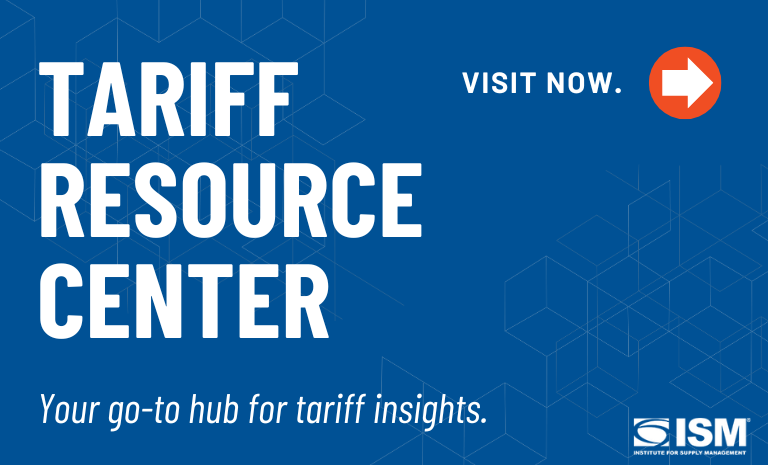Tariff Tremors and Caution in the Metals Market
Markets
Metal prices had a volatile start to 2025. And given largely priced in steel and aluminum tariffs and limited demand growth, the next big move for many metals may be downward.
Stainless steel prices have held mostly flat, with stainless inflation ticking up slightly, 0.56 percent from February to March. Meanwhile, nickel — a key driver for stainless steel — climbed nearly 9 percent in the first quarter (Q1), but surplus inventories kept fundamentals soft. Aluminum premiums, which spiked over 100 percent in late 2024 on tariff news before stalling, had a similar slight upward tick from February to March.
Hot-rolled coil (HRC) steel spiked to about US$920 per ton in Q1 on pre-tariff buying, a 34 percent jump from January. By April, however, HRC had slipped from its peak as buyers paused after Section 232 tariffs of 25 percent took effect. Copper followed suit: The MetalMiner Copper MMI, an inflation index, gained 2.8 percent from January to February, and copper prices jumped on the threat of a 25-percent levy.
Price Spikes Were Short-Lived
Initial tariff announcements unleashed a wave of panic buying and price spikes across primary metals and downstream parts. Yet history shows such spikes are fleeting, as elevated costs quickly erode demand — a dynamic already unfolding.
MetalMiner research finds tariffs tend to lift prices for only a quarter or two before demand destruction forces a retreat to prior levels. Indeed, by early Q2, many metal prices began leveling off or reversing course as buyers balked at inflated costs.
Beyond tariffs, industry consolidation looms over pricing. The proposed Nippon Steel-U.S. Steel merger remained in limbo at press time: Nippon’s $14.9 billion investment had been blocked on national security grounds by the Biden administration, however, in early April, President Donald Trump ordered a new security review.
Without Nippon’s capital infusion, U.S. Steel remains vulnerable, raising odds of capacity cuts or a takeover by a domestic player. Cleveland-Cliffs still eyes U.S. Steel but has a weaker financial position, with high debt and a bid that was half of Nippon’s.
End-market demand trends offer mixed signals for 2025. With the energy sector booming but construction and auto markets flat-to-down, overall metal demand in 2025 is lukewarm — limiting how long suppliers can sustain tariff-fueled price increases.
Proactive Purchasing to Capture Declines
Manufacturers should take this environment as a cautionary tale. Volatility can be a double-edged sword — those who assumed early-2025 price surges would persist may now be stuck with high-cost inventory.
As prices soften, proactive sourcing teams must be ready to act. One key insight: Mills and service centers are quick to announce price hikes, but far quieter when prices fall. This slope of declining prices means inattentive buyers could easily overpay. After a year of oversupply, stainless mills repeatedly gave transactional discounts without fanfare.
The lesson for all metals: Procurement professionals need to actively monitor the market and press suppliers for discounts as fundamentals weaken. A cautious approach — watching indexes, leveraging should-cost models and timing buys strategically — will ensure manufacturers don’t miss the coming cost relief.
United States
Mergers and acquisitions (M&A) in the U.S. power sector are expected to be strong this year, as soaring energy demand from artificial intelligence (AI)-driven data centers fuels investor interest. Power assets have become highly attractive to energy firms, private equity and institutional investors. The sector has already seen significant deal activity, with 27 transactions worth US$36.4 billion in January and February alone, led by Constellation Energy’s $16.4 billion acquisition of Calpine. High share prices are enabling major deals, while private equity firms hold $334 billion in capital for infrastructure investments. Some firms are eyeing acquisitions in emerging technology or existing energy infrastructure. Investors are also privatizing power companies, especially renewable firms undervalued in public markets. Meanwhile, utilities are selling assets to fund expansion. Despite market challenges, power M&A is expected to thrive, though supply chain constraints, tariffs and potential policy shifts under the Trump administration add complexity to the landscape.
Brazil
The world’s largest soybean producer, Brazil is on track for a record harvest this year, with both the U.S. Department of Agriculture (USDA) and Brazilian forecasts predicting the largest crop (about 6.2 billion bushels, up 13 percent year over year) in history. That result, combined with U.S. production, would be a boon for global supply. While Brazil’s harvest is well underway, the U.S. planting season is in its earlier stages. USDA harvest forecasts for America assume favorable weather and trendline yields, contributing to optimistic supply expectations that would keep global soybean prices in check. In the U.S., however, prices face additional uncertainty due to potential Chinese tariffs, which could further limit gains. However, markets are forward-looking, and while prices have already declined, further downside may be limited. Market trends will depend on Brazil’s final harvest results and the progress of the U.S. planting season.
France
Europe’s chemical industry is in decline, but France is pushing a plan to revive it. Once a manufacturing powerhouse, the sector has struggled due to soaring energy costs, prompting companies like Germany’s BASF to invest abroad. To retain production in Europe, France proposes the European Union (EU) classify 15 key chemical compounds as “strategic,” ensuring funding access and self-sufficiency in essential materials. The proposed Critical Chemicals Act would support vital chemicals like ammonia, methanol, ethylene and benzene, which are crucial for agriculture, energy and petrochemicals. France warns that the industry faces a crisis, citing a 12-percent production drop from 2019 to 2023 and potential shutdowns of steam cracking processing, jeopardizing thousands of jobs. The act also aims to help plants modernize and decarbonize while addressing competition from non-EU producers. While industry leaders acknowledge the need for action, some worry about bureaucracy and environmental conflicts. The debate continues as the EU evaluates measures to safeguard its chemical sector.
Saudi Arabia
The kingdom’s reliance on foreign consultants is shifting, pressuring an industry already facing global challenges. While Saudi Arabia remains a key market, the pace of contract awards has slowed, prompting some firms to relocate staff. Major consulting firms have been affected, with layoffs and unassigned consultants increasing. The slowdown stems from lower oil prices, fiscal pressures and growing scrutiny of hefty consulting fees. Some Saudis are calling for more local hiring, questioning the value of expensive foreign advisory services. Additionally, the kingdom is shifting focus from strategy consulting to execution-based work, requiring firms to adapt. Despite the slowdown, Saudi Arabia remains a lucrative market. However, firms that fail to evolve with changing demands risk losing business as the government prioritizes efficiency, cost-effectiveness and local expertise over traditional consultancy models.
Thailand
The Thai beef market is expanding rapidly, creating opportunities for U.S. exporters, according to a U.S. Department of Agriculture (USDA) report. Thailand’s rising affluence and urbanization and a growing food service sector have recently driven an 8-percent increase in beef consumption. However, high import tariffs and strong competition remain challenges. In 2023, Thailand consumed 216,000 tons of beef and veal; projections call for 234,000 tons this year. While fresh and chilled beef dominate sales, the frozen segment offers potential for U.S. exporters. U.S. frozen boneless beef exports to Thailand grew 24 percent from 2018 to 2023, totaling 1,083 tons. Australia leads the Thai market with a 44-percent share, benefiting from tariff exemptions. In contrast, U.S. beef faces a 50-percent import tariff, making it costly. To expand market share, the USDA report states, U.S. exporters must focus on premium positioning, strategic marketing and industry partnerships to navigate trade barriers.


